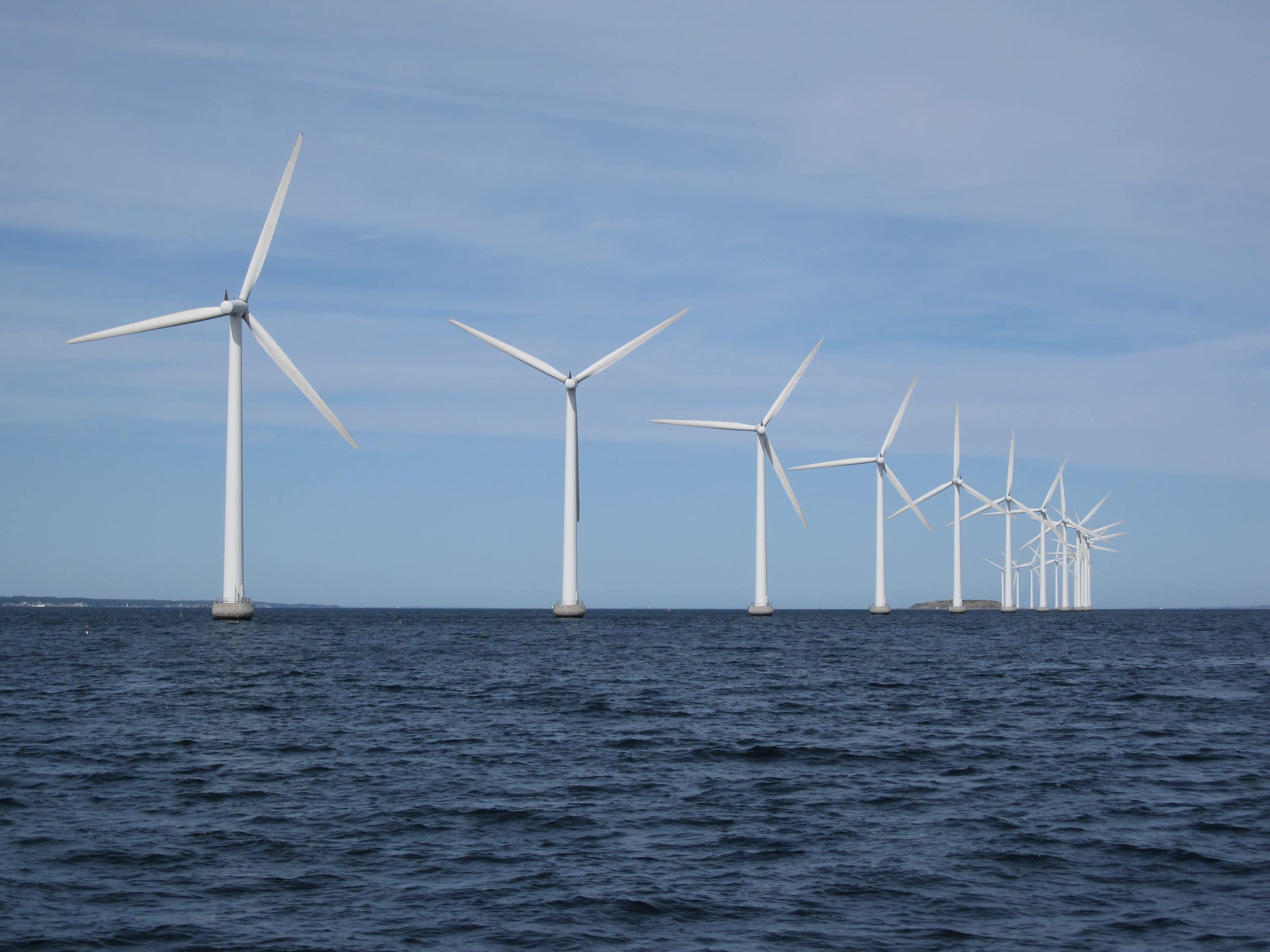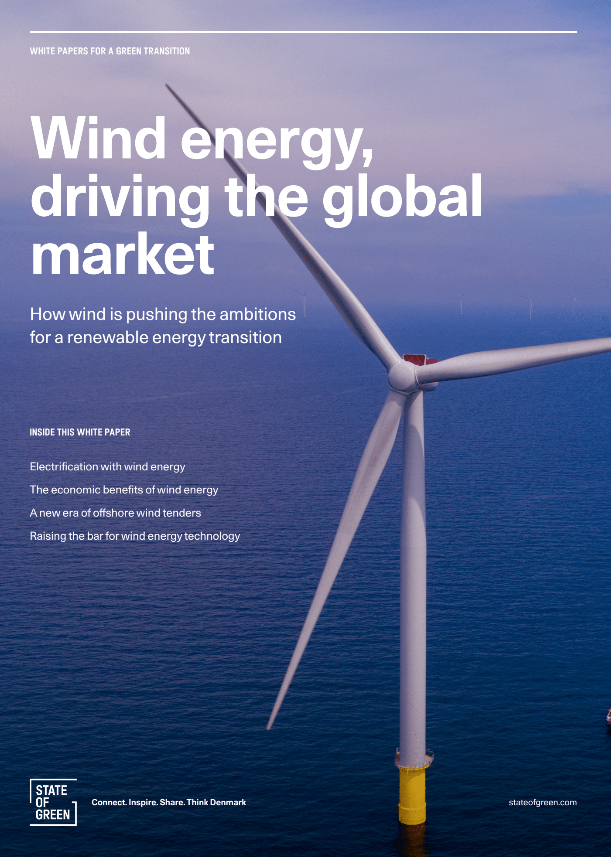Download our publication on wind energy today
This article is part of our publication ‘Wind energy’.
Download nowPerspective
Wind energy


This goes hand-in-hand with a massive technological leap taken by the industry, building on 130 years of knowledge and capacities developed in the Danish wind energy value chain. Experience and innovation, combined with a high level of integration of future technologies, has made Denmark a true
wind energy hub.
As wind turbines grow in size, so does their efficiency and power. Over the past decade, modern wind turbines have grown substantially is scale, and the longer blades, higher owers and other finetuned elements allow for a higher production output. As a country with short geographical distances, a well-developed infrastructure, and highly skilled work force, Denmark has a unique environment for research, development, test and demonstration of new wind energy technology. To support this, the Danish government has allowed for the establishment of two world leading test sites for full-scale
testing of both onshore and offshore wind turbines: Test Centre Østerild and Test Centre Høvsøre. Having access to full-scale test facilities allows manufacturers to determine how their new wind turbine technology will perform under real operating conditions. The turbines are tested on their design, performance, safety and noise emission, and as the prototype turbines in the test centers are connected to the Danish grid, manufacturers are also able to meticulously measure and assess their turbine platforms interplay with the grid system.
To maintain competitiveness of the fast-moving wind industry it is key to foster and nourish and innovative R&D environment. At DTU Wind Energy innovative efforts are taking place within the area of floating wind energy – and in 2020 they initiated the testing of new platform types. The Danish Innovation Fund has invested 15.8 million DKK (2.1 million EUR) in the project, that will develop and optimise the designs of floating turbine foundations. Other projects like ZEBRA, with Denmark-based LM Wind Power as a main collaborator, are taking steps to lower the carbon footprint from wind turbine production to reduce environmental impact.
The Danish research environment has even begun looking into how offshore foundation platforms can act as artificial reefs and spawning area for fish. In other words, innovation is a key driver in improving the sustainability of the industry as a whole. This diversity of research topics showcases the need for a holistic approach to wind energy innovation.
Another equally important factor in the quest to secure the competitiveness of wind energy is the costs of manufacturing. Standardisation efforts have been crucial in lowering the levelized costs of energy (LCoE) and making wind energy the most viable and cost-effective form of renewable energy
today. APQP4Wind, a Danish organisation focusing on standardisation in ‘Applied Product Quality Planning’ for the wind industry, has ensured that a standardised approach to quality assessment has progressed rapidly in the last few years.
Through cross-industrial collaboration headed by Siemens Gamesa and Vestas, APQP4Wind has developed a common quality assurance methodology for the global wind industry that helps reduce risk and lower the costs associated with poor quality. What started as a Danish initiative has now been deployed globally with companies all over the world being trained and certified to apply the framework in their own production processes. This ensures a collective and worldwide push to reduce the cost of wind energy.

This article is part of our publication ‘Wind energy’.
Download now